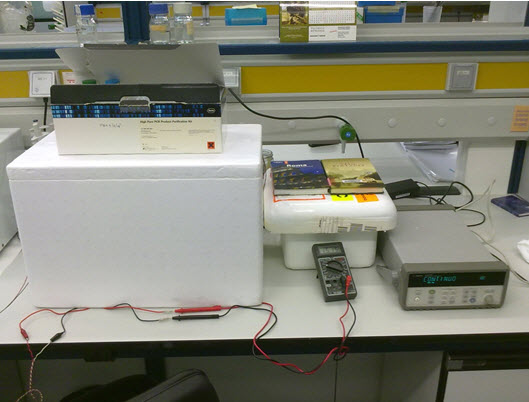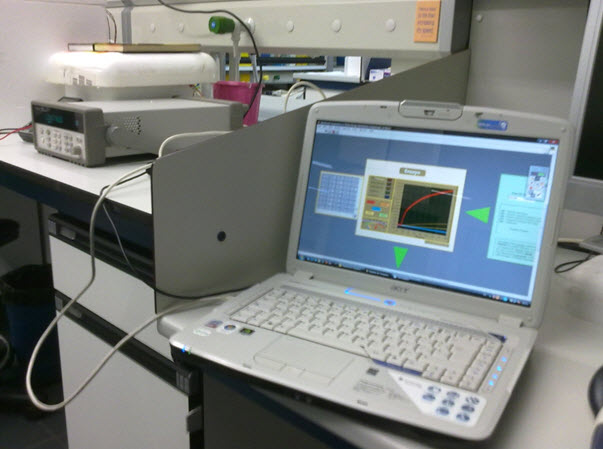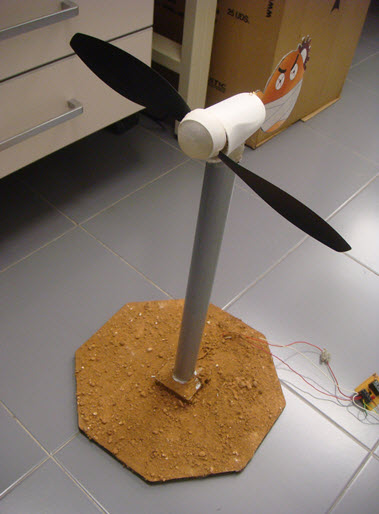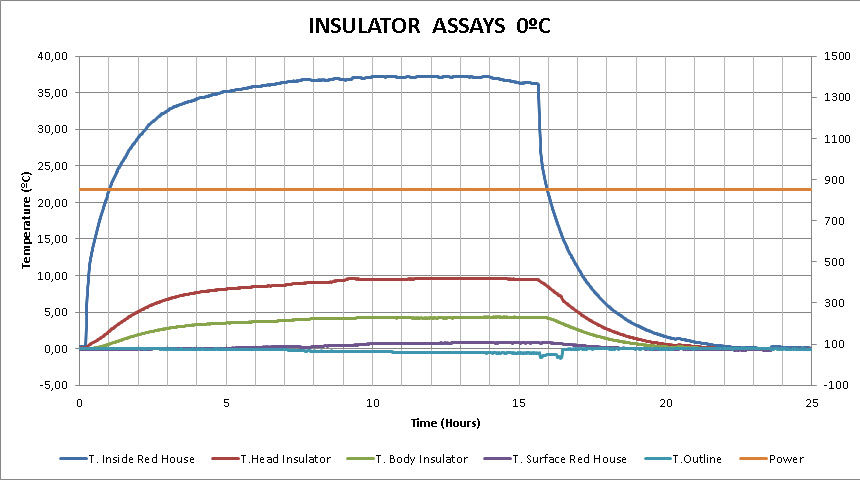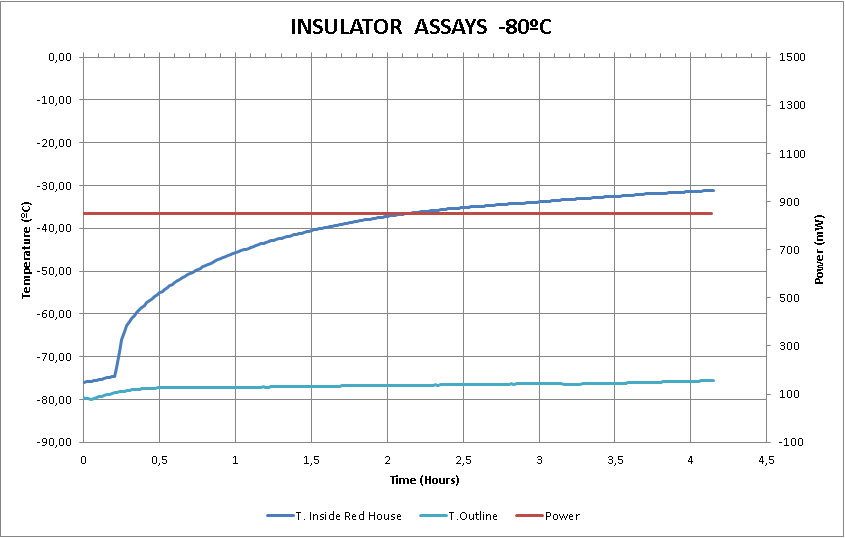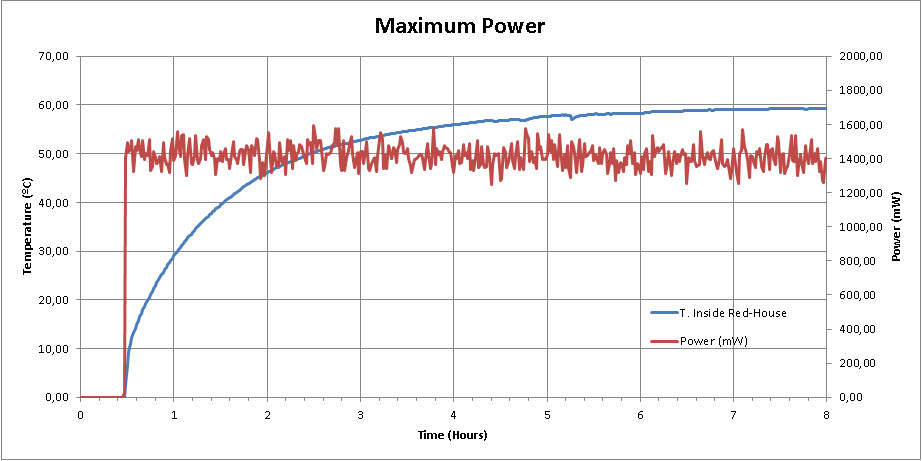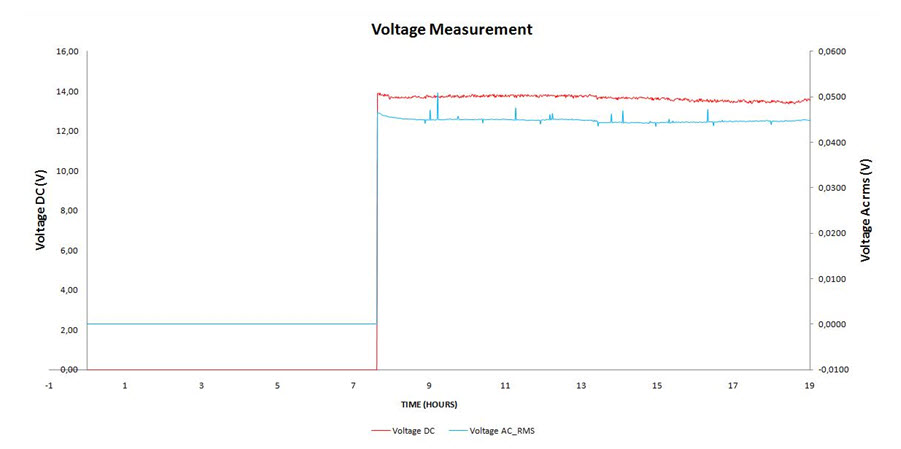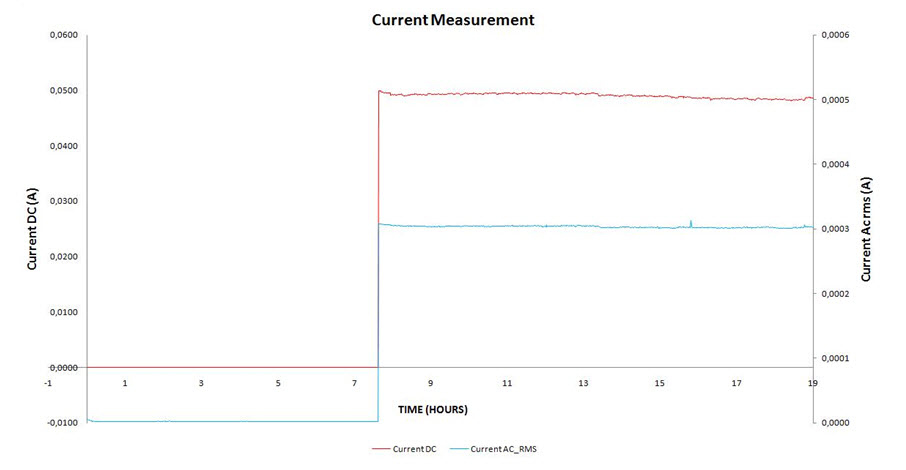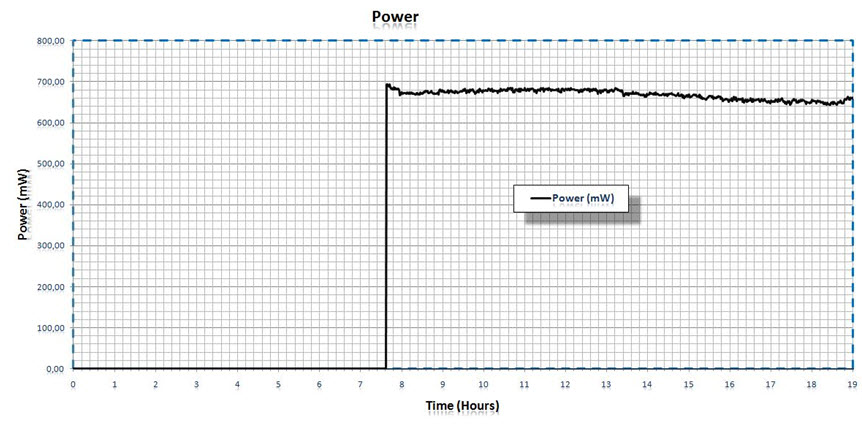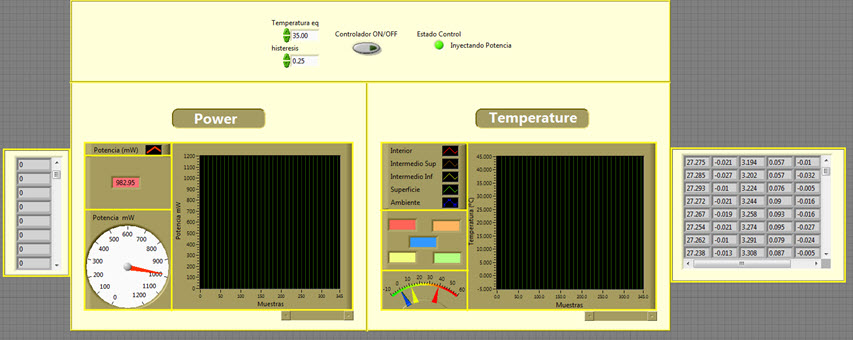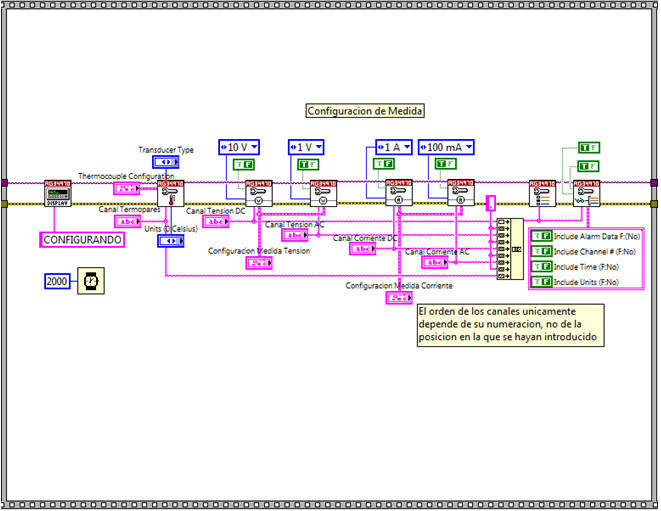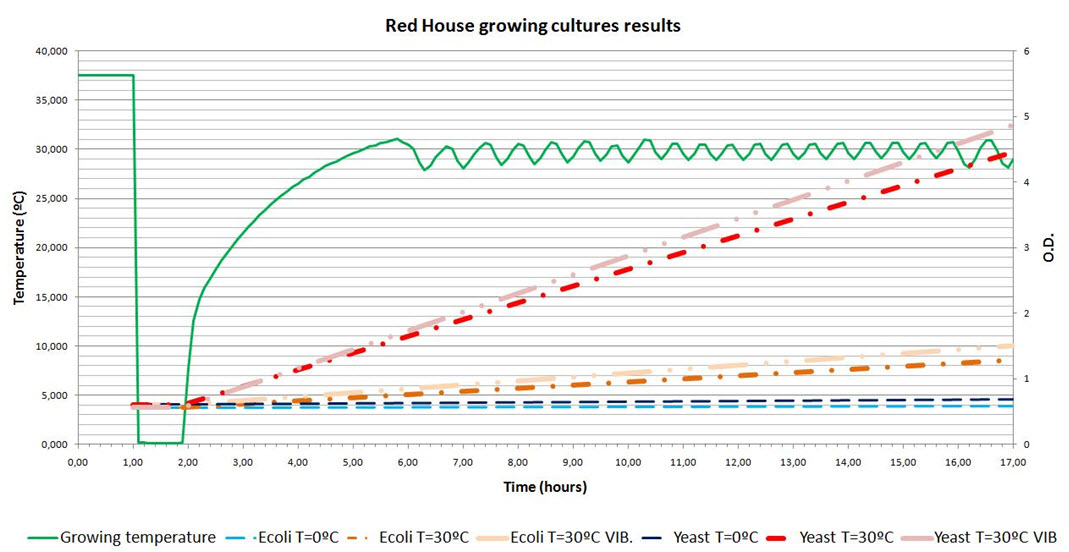Team:Valencia/RH
From 2010.igem.org
Alejovigno (Talk | contribs) |
Alejovigno (Talk | contribs) (→Controlling the Red House) |
||
| Line 83: | Line 83: | ||
This second sequence is the kernel of the programme. In this routine orders are given to the Datalogger to communicate with all the sensors and to measure all the variables. This routine is repeated constantly until the stop signal is given, finishing this way the experiment. | This second sequence is the kernel of the programme. In this routine orders are given to the Datalogger to communicate with all the sensors and to measure all the variables. This routine is repeated constantly until the stop signal is given, finishing this way the experiment. | ||
| - | Experimenting with the Red House | + | == Experimenting with the Red House == |
Finally, we are going to test this whole equipment and get some results from it. In short, what we want to find out is the influence of the Red House on the growing cultures into it. We cultured both Saccharomices cerevisiae (with the prionic swith (LINK)) and E. coli (expressing LEA proteins). | Finally, we are going to test this whole equipment and get some results from it. In short, what we want to find out is the influence of the Red House on the growing cultures into it. We cultured both Saccharomices cerevisiae (with the prionic swith (LINK)) and E. coli (expressing LEA proteins). | ||
| Line 98: | Line 98: | ||
[[Image:Valencia_rh_results.jpg|thumb|center|680px|Results of the experiment carried out in the Red-House.]] | [[Image:Valencia_rh_results.jpg|thumb|center|680px|Results of the experiment carried out in the Red-House.]] | ||
| + | There is a lot a information to get form this graphic. First, the temperature reaches and maintains a growing optimum of 30ºC thanks to the power/temperature regulation system. The oscilations show that the system is being automatically and constantly regulated to ensure the optimal conditions for the cultures. | ||
| + | |||
| + | Secondly, the samples of yeast and bacteria kept at 0ºC showed no growth at all. However, the samples inside the Red House showed significant growth. Probably the yeasts grew quicker because 30ºC is their optimal temperature. | ||
| + | |||
| + | Finally, the shaken samples (LINK video motor) (the transparent ones) showed a little bit more growth than the ones left to stand. Furthermore, the vibration motor works as well with energy coming from the wind turbine. | ||
| + | |||
| + | In short, we can conclude that the Red House prototype works quite well. It allows cultures to grow inside of it protecting them from the outside conditions. Moreover, the regulating systems developed for the device allow the controller to optimize the energy and power produced by the wind turbine. | ||
Revision as of 20:52, 27 October 2010
Time goes by...
(El tiempo pasa...)
Follow us:

Our main sponsors:

Our institutions:

Visitor location:
» Home » The Project » Creating Technologies
Red-House
Contents |
Defining the Red House
The device that we call Red House is a planetary incubator chamber that insulates our cultures and allows them to grow up in an extreme environment like Mars. It is pretty much like an improved greenhouse on Mars. Furthermore, it can supply itself with energy coming from a windmill which produces energy from the strong martian wind. This renewable source of energy is absolutely essential for the working of the Red House.
The main objective of this system is to verify the capability of protecting the cultures located inside the Red House device. This protection against the harsh environmental conditions on Mars is only the first step because after that we aim to set a dynamic system inside the Red House in order to maintain the best growing conditions inside of it.
The primary objetive of protecting cultures against extreme temperatures is achieved by the thermal isolation the Red House provides. The Red House is able to maintain a closed atmosphere from the exterior. Besides temperature, the Red House protects as well against UV radiation, especially the range between 200 and 320 nm, which is very harmful for organisms.
In order to maintain a constant and renewable supply of electric power for the Red House, two different alternatives were studied:
- Windmill, which uses a eolic energy
- Peltiers cells that produce power using solar energy
Measuring the Red House
The electric power produced this way is distributed into the thermal insulation device, where it feeds a electric resistance. Due to the Joule effect this resistance transform the incoming electric energy into thermal energy and warms up the interior of the Red House. In the next graph it is shown the difference between the internal and the external temperature. As you can see the insulation achieved is quite good. The Red House is able to maintain a 60ºC difference between outside and inside. The -80ºC conditions were achieved using frozen carbon dioxide.
Once the test were conducted, it was clear that due to the space, time and budget limitations the best option was the wind turbine. At the same time, we carried out a series of tests that allow us to determine the exact amount of electric power needed for ensure an optimal growing environment for the cultures inside the Red House. Test with the wind turbine where conducted in order to make the necessary design changes to reach the optimal energy production.
As you can see in the graphics above it is possible that sometimes the power production exceeds the temperature necessity of the cultures. In this situations the temperature would increase becoming harmful for the cultures. In order to avoid this situation, it was decided that it was mandatory to have the possibility of regulating the electric power coming into the system. Therefore we can control the temperature inside the Red House according to the external conditions and our necessities.
In the graphic above you can see the temperature inside the Red House reaching and maintaining a value of 30ºC. This temperature ensures the best growing conditions for the yeast cultures.
In order to achieve a proper control of the system it is essential to measure the evolution of the temperatures inside the Red House and the power coming into the device at the same time. With this data available we can regulate the temperature the way we want in each moment.
The temperature measures are carried out using thermocouples located in precise places both inside and outside the device. The Red House has different insulator layers and the temperatures are measured in each layer as well. The signal produced by those measures ends in a acquisition and capture data system called Datalogger (LINK DATALOGGER). At the same time all sensors are connected to an ice compensation chamber to prevent measurement errors Temperature compensation system.
On the other hand, the power produced by the system is calculated directly by measuring the voltage and the electric current going through the system. In the next group of graphics you may visualize the voltage, the electric current and the power generated by the wind turbine.
Once we are able to acquire, store and proccess data thanks to the Datalogger, we can visualize them through a computer and to implement our own algorithm to control the temperature.
Controlling the Red House
We use a computer to control the Datalogger unit and to recieve the data flow coming from it. Moreover, using the computer we can represent the acquited data on real time and taking decisions auomatically.
We design the software responsible for controlling the Red House using LabVIEW, which is based on a graphic programming language called G. This tool allow us to create virtual instruments to visualize the recorded parameters. The following picture shows the virtual instruments programmed to show the temperature (in several places) and power produced on real time.
The controller software is formed by several sub-routines or sequences that are executed in an independent way. The following diagram shows the entire programme:
The software programmed is quite extensive and going through all the sequences would add no interesting information. However, it is appropiate to show at least the two basic sequences that form the heart of the program.
In the next picture it is shown the sequence that configure the types of measures to be done and the way to acquire the data from the Datalogger.
This second sequence is the kernel of the programme. In this routine orders are given to the Datalogger to communicate with all the sensors and to measure all the variables. This routine is repeated constantly until the stop signal is given, finishing this way the experiment.
Experimenting with the Red House
Finally, we are going to test this whole equipment and get some results from it. In short, what we want to find out is the influence of the Red House on the growing cultures into it. We cultured both Saccharomices cerevisiae (with the prionic swith (LINK)) and E. coli (expressing LEA proteins).
The experiment we carried out is quite simple and to draw some conclusions from it is direct and clear. The basic steps followed in the experiments are:
- Grow the cultures overnight in a stove at 37ºC. Three samples of each organism were grown.
- Measure the Optical Density of each sample.
- Introduce two samples into the Red House, which is surronded by a layer of ice. One sample is constantly shaken by a shaftless vibration motor. The other sample lacks any kind of vibration. The third sample grows outside the Red House at the external temperature, which is 0ºC.
- Keep the cultures growing and the experiment running for 12 hours.
- Take out the cultures from the Red House and measure the Optical Density of the three samples.
The following graphic shows the results of the experiment explained above.
There is a lot a information to get form this graphic. First, the temperature reaches and maintains a growing optimum of 30ºC thanks to the power/temperature regulation system. The oscilations show that the system is being automatically and constantly regulated to ensure the optimal conditions for the cultures.
Secondly, the samples of yeast and bacteria kept at 0ºC showed no growth at all. However, the samples inside the Red House showed significant growth. Probably the yeasts grew quicker because 30ºC is their optimal temperature.
Finally, the shaken samples (LINK video motor) (the transparent ones) showed a little bit more growth than the ones left to stand. Furthermore, the vibration motor works as well with energy coming from the wind turbine.
In short, we can conclude that the Red House prototype works quite well. It allows cultures to grow inside of it protecting them from the outside conditions. Moreover, the regulating systems developed for the device allow the controller to optimize the energy and power produced by the wind turbine.
 "
"
